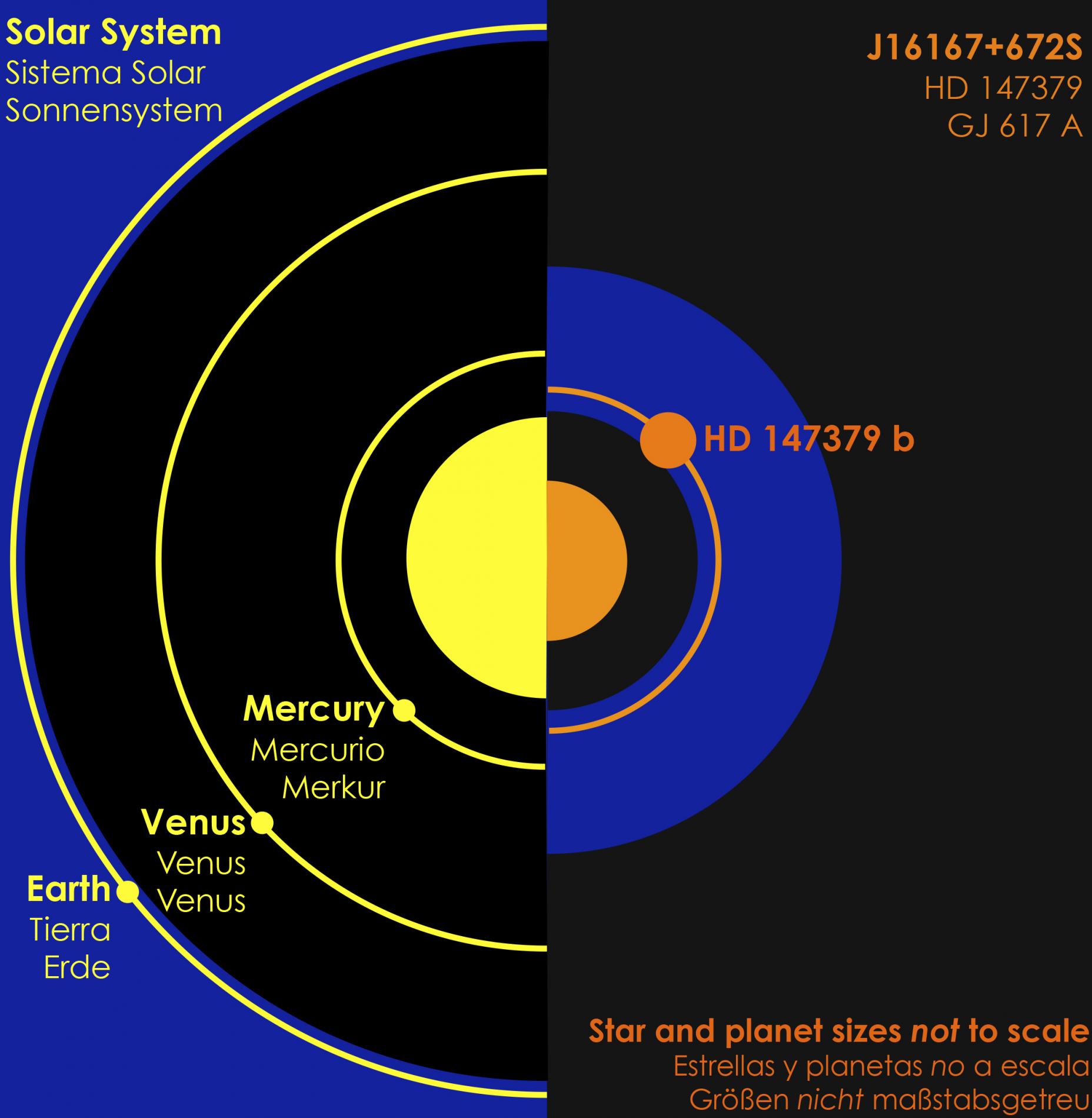CARMENES instrument finds its first exoplanet
The planet HD 147379 b, with a mass slightly higher than Neptune, orbits a very close star
The CARMENES project, promoted by a consortium of eleven German and Spanish institutions and led by the Higher Council for Scientific Research (CSIC), has discovered its first planet outside the Solar System from the 3.5-meter telescope of the Calar Alto Observatory in Almería, dependent of the CSIC and the Max Planck Society. The details of the finding are published in the journal Astronomy & Astrophysics Letters.
The instrument has observed a dwarf star very close and half as massive as the Sun, around which orbits a planet named HD 147379 b, slightly more massive than Neptune. This exoplanet completes its orbit every eighty-six days at a distance that is only a third of that which separates the Earth from the Sun. The planet is within the so-called zone of habitability, that is, the region in which around a star where conditions allow the existence of liquid water.
"It is unlikely that life could have developed on this planet because it probably lacks a solid surface," explains Ignasi Ribas, researcher at the Institute of Space Sciences (CSIC). And he adds: "The exoplanet, which is similar to Neptune and orbits the habitable zone of a nearby star, is not one of the most spectacular, but it is the first. We have a future of observations that will undoubtedly bear fruit. "

A UNIQUE INSTRUMENT
The discovery confirms the efficiency of CARMENES as an instrument designed to search for terrestrial planets in the habitability zone. "False positives are common in the search for extrasolar planets, and here emerges one of the strengths of CARMENES: by observing in the visible and infrared we can confirm the findings without the need for other checks. No other instrument can do this, "says Pedro J. Amado, CSIC researcher at the Institute of Astrophysics of Andalusia and co-principal investigator of the project.
CARMENES is a unique instrument in the world also because it will detect speed variations in the movement of stars located at a great distance with an accuracy of the order of one meter per second.
The instrument has been developed by a consortium of eleven Spanish and German institutions. In Spain, the Institute of Astrophysics of Andalusia (CSIC) co-leads the project and has developed the infrared channel; the Institute of Space Sciences (CSIC-IEEC), the Complutense University of Madrid, the Institute of Astrophysics of the Canary Islands and the Center for Astrobiology (CSIC-INTA) also participate in the project. It has obtained funding from the Max-Planck Society, the CSIC, the Ministry of Economy and Competitiveness and the Junta de Andalucía, among others.
A. Reiners et al. "The CARMENES search for exoplanets around M dwarfs. HD147379 b: A nearby Neptune in an early-M dwarf’s temperate zone". Astronomy & Astrophysics Letters. DOI: https://doi.org/10.1051/0004-6361/201732165
Instituto de Astrofísica de Andalucía (IAA-CSIC)
Unidad de Divulgación y Comunicación
Silbia López de Lacalle - sll[arroba]iaa.es - 958230532
http://www.iaa.es
http://www-divulgacion.iaa.es

